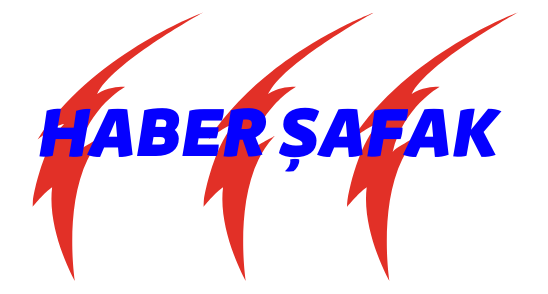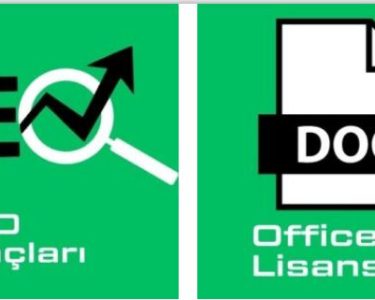The raised floor, which is one of the indispensable elements of building decoration, is basically 2 types as dense chipboard or calcium sulphate based on the area to be used. In the raised floor system; the pedestals can be adjusted and the gaps between the reinforced concrete slabs can be changed. It is also very useful and ideal as it is an ideal space-forming system for running HVAC ducts, concealing electrical cables and intervening when necessary.
What is Raised Floor?
The raised floor consists of panels mounted on vertically adjustable pedestals. It is a system that can be fixed on the floor with adhesive or mechanical fixings. It is also widely used in building applications. The system, which simplifies restructuring, emphasizes aesthetics and cleanliness.
Of the areas where the system is most applied;
- General open office areas
- Training and conference rooms
- Computer rooms and technology rooms
- System rooms
- Electric rooms, fan rooms
But raised floor is not suitable for direct use in wet areas such as toilets, showers, bathrooms, kitchens and food preparation areas.
What are the Advantages of Raised Floors?
The system also called floating floor, is a unique system created to meet the technological needs of technical rooms, for easy accessibility and maintenance of infrastructure cabling systems. Raised flooring, which is frequently preferred in modern buildings and especially in office areas, provides flexibility while it supplies the advantage of being easily adapted to office spaces where decoration changes are made.
Among the advantages of the system;
- It allows to reduce construction costs in high seismic areas.
- If factory finished materials are used, there is no need for extra floor covering costs.
- It is very useful as it provides acoustic isolation.
Load carrying values vary based on product. Products with a carrying capacity of at least 4.7 Kn will provide the advantages of the system without overloading your building.
How to Choose the Best Raised Floor?
While the system provides benefits for any building, it is also ideal thanks to its flexibility and efficiency. When carrying out a raised floor project, some points need to be taken care of and to ensure that the installation takes place more accurately.
- It is checked whether the subfloor meets the conditions. Tightness, wet or dryness, contamination, structural integrity, moisture and alkalinity levels should be examined.
- It should be looked at how it will interact with the door sills.
- Many factors such as load carrying requirements, fixed loads, pedestrian traffic should be considered.
- The fluctuations on the ground should be controlled.
Field properties are also important in terms of product recommendation. If the area to be used is a system room and requires fire resistance, calcium sulfate product can be preferred or chipboard core products are preferred for open office areas. Therefore, attention is given to the use of materials suitable for the place where the system will be built.
How Is Raised Flooring Applied?
There are many materials and tools to use when installing a raised floor. When using tools such as suction cups, rubber hammer, metal or plastic spatula, laser level, measuring tape, professional drill, screwdriver, powder level striking line, level hose, aluminum ruler, cup saw, arc saw, marble saw, jigsaw, the professional wears personal protective equipment called PPE.
After all the tools and materials are prepared, the installation phase begins:
- It is ensured that the surface is completely stable and flat. Cracks, ripples, fragments, moisture and residues are completely cleaned.
- Application is performed after finishing the processes such as ceiling tiling and wall painting.
- After the completion of all these processes; measured level points are marked every 5 linear meters for floor mounting. For each new plate row, nylon line and stencil leveling is executed.
- To install the underfloor support structure, the base is placed at the correct points and the beams are screwed.
- After the installation of the support structure is finished; laser leveling equipment and level gauge are made to adjust the ground height. Here, attention must be taken to ensure that the level is at the same height.
- The floor panels are cut to the correct dimensions by placing them on the beamed frames.
After these procedures; the association process of floor panels that raised in the vertical direction begins. The number of steps is adjusted according to the door fronts and floor height. Then, to improve the step connections, the raised floor steps are attached as aluminum edging with using nail-free glue. Raised floor implementation is an exercising that must be done laboriously and carefully. Therefore, it is necessary to get support from experts and experienced masters.
What are the BVT Raised Flooring Models?
BVT raised flooring models vary with panel extract and coating types. The system has infrastructure legs produced as standard in sizes of 60cm x 60 cm with dimensions of 30 mm, 34 mm and 40 mm with a thickness of 8 cm and 120 cm.
Types of Panels
Among the varieties of BVT panels are chipboard, decking and concrete varieties. Fiberboard panels are a type of panels with a fire resistance of 30 minutes. It is also quite decent in terms of load-bearing. It is generally more ideal for use in office areas.
Another variety of BVT panel types is calcium panel, which is produced in 34 mm standards and also produced in different thicknesses. It is frequently preferred in system rooms, computing centers, office spaces, IT rooms and automation centers, electrical panel rooms and areas where fire resistance is important.
Infrastructure Group
There are metal legs in the BVT infrastructure group. The length of the feet might be changed according to the desired need. In the standard infrastructure, standard infrastructure is used in between 8 cm and 120 cm. But these dimensions can be changed. While a girdle is used for feet 30 cm and up, a buttress is used for feet 80 cm and up.
Another group of infrastructure is seismic flooring. It is located on the lower sole of the foot, the body of the foot, the upper cover of the strut and has an M18 bolt, a main beam lower cover and a main beam. The system is an earthquake-resistant system that has a main secondary beam connection and a tension rod.
Covering Options
BVT upgraded floor covering options consist of three different options. The coating options, which are designed for every taste and provide comfort and aesthetics in living areas, could be applied directly to the floor.
- HPL
- PVC (homogeneous, heterogeneous, conductive)
- PANELS WITH CERAMIC INSERTS
- LAMINATED PARQUET
Laminated parquet, which is more preferred thanks to is naturalness and long-term use, is also quite ideal in terms of decoration. The product also solves the problem of acoustics as it is resistant to water and moisture.
How Much Are the Prices for Upgraded Flooring?
Prices for raised flooring vary depending on the material to be used, the workmanship, and the m2 of the area to be laid. By contacting the BVT expert team, you could receive detailed information about the raised flooring and make changes to your decoration at a cost that meets your needs and expectations.



